Exxaro Resource limited Report Selector 2018
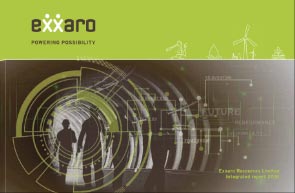
Currently viewing Integrated Report 2018
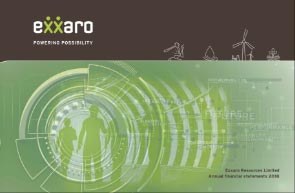
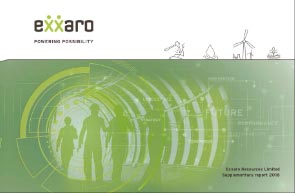
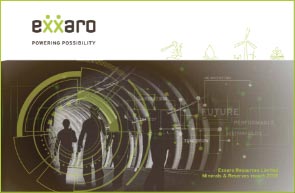

Currently viewing Integrated Report 2018



The content of the CMRR is compiled from detailed independent reports received from appointed competent persons at our various operations and projects, and available on request from the group company secretary. The reported Coal Resources and Coal Reserves presented are therefore summarised versions of these reports.
The information in the CMRR https://www.exxaro.com/investor/integrated-reports2018/mineral-reserves-resources/performance-at-a-glance.php is aligned with the JSE Listings Requirements (section 12) and includes information on reporting governance, competence, tenure, risk, liabilities and assurance as well as auxiliary descriptions of applicable projects, operations and exploration activities.
In addition, each operation and project maintains an individual competent person's report (CPR) that encapsulates the systematic and detailed estimation process conducted or supervised by that person. These reports are aligned with the checklist and guideline of the reporting and assessment criteria of the South African Code for the Reporting of Exploration Results, Mineral Resources and Mineral Reserves (SAMREC 2016), and scrutinised and updated when required. Exxaro continuously examines various aspects of the Mineral Resource estimation process and we have revised and aligned our reporting with the guidelines of SAMREC 2016. Exxaro updated internal CPRs for our mineral assets in 2017 and repeated this process in 2018 to optimise the content. No material changes as defined in the code triggered the CPR updates, but we considered the introduction of the 'if not, why not' principle (SAMREC 2016) as significant enough to warrant the updates.
Exxaro is committed to the principles of materiality, transparency and competence, and continuously strives to enhance the level of estimating and reporting of Coal Resources and Coal Reserves.
| We provide all relevant information that investors and their professional advisers would reasonably require, and expect to find, to make a reasoned and balanced judgement | We provide sufficient, clear and unambiguous information | We have qualified and experienced competent persons who are subject to an enforceable professional code of ethics |
The annual estimation and reporting process is managed through the Exxaro geosciences policy and associated Coal Resource and Coal Reserve reporting procedure. The documents dictate technical requirements for estimation and reporting, and include guidelines on methodologies, templates and assurance.
Both the policy and procedures are aligned with the guidelines of the SAMREC Code 2016 and, for South African coal reporting, SANS 10320:2004. Processes and calculations associated with the estimation process have been audited by internal competent persons and are audited by external consultants when deemed applicable. For mines or projects in which Exxaro does not hold the controlling interest, figures have been compiled by competent persons from the applicable companies and not audited by Exxaro.
Resource estimations are based on the latest available geological models, which incorporate all new validated geological information and, if applicable, revised seam, resource definitions and resource classifications. For Exxaro operations and projects, we use a systematic review process that measures the level of maturity of exploration work done, extent of geological potential, mineability, licence-to-operate considerations and associated geological risks/opportunities to establish eventual extraction (EE). We have enhanced our methodology to ensure that all factors for reasonable and realistic prospects for eventual and economic extraction as outlined in table 1 (4.3) of SAMREC 2016 have been reasonably considered.
For Exxaro's Coal Resources, the location, quantity, quality and continuity of quality and geology are known to varying degrees of confidence and continuously tested through exploration activities such as geophysical surveys, drilling and bulk sampling. Coal Resources are classified into Inferred, Indicated or Measured categories, based on the degree of geological confidence. Distribution of points of observation (drilling positions, trenches, etc), quality assurance and quality control in sample collection, evaluation of structural complexities and, in the case of operations, reconciliation results, are considered in classifying resources. An annually compiled exploration strategy outlines activity planned to investigate areas of low confidence and/or geological or structural complexities to ensure resources of a high level of geological confidence are considered for mine planning.
Coal Reserves are estimated using relevant modifying factors at the time of reporting (mining, metallurgical, processing, infrastructure, economic, marketing, legal, environmental, social and governmental requirements). Modifying factors are reviewed before and after reserve estimation by the persons responsible for ensuring all factors are timeously and appropriately considered. Signed-off reserve fact packs that record losses, recoveries/yields, cost, commodity prices, exchange rates and other required factors applied, are documented in each LoMP and independent competent person's report.
Reported Coal Reserves are primarily derived from Indicated and Measured Coal Resources, although limited Inferred Resources may be included in the LoMP at the discretion of the competent person. These inclusions are scrutinised and tested, and their impacts are known.
Coal Resources and Coal Reserves quoted fall within existing Exxaro mining or prospecting rights. Rights are of sufficient duration (or convey a legal right to convert or renew for sufficient duration) to enable all reserves to be mined in line with current production schedules. The only exceptions are the Grootegeluk (executed March 2011 for 30 years), Matla (executed March 2015 for 10 years) and Forzando (executed June 2013 for 16 years) operations, where adequate Reserves exist for LoMPs extending well beyond the period for which they were granted.
The Mineral Resources and Mineral Reserves are summarised on our year in review in the CMRR and reported as those remaining on 31 December 2018 and compared with the corresponding estimates reported on 31 December 2017. The commodity, ownership, status of project/operation, mining method, Resource and Reserve classification categories and associated tonnage qualities or grade are stated and any material changes year on year are captured and explained as footnotes.
Mineral Resources are reported including Mineral Resources that have been converted to Mineral Reserves and at 100% Exxaro ownership, irrespective of the individual operation or project's attributable shareholding. An exception is our reporting for Gamsberg and Black Mountain, as base metal figures from Vedanta Resources plc represent resources excluding those Mineral Resources converted to Mineral Reserves.
It is important to note that reported estimates are not an inventory of all mineral occurrences identified, but a reasonable estimate of those, which under assumed and justifiable technical, environmental, legal and economic conditions, may be economically extractable at present (Mineral Reserves) and eventually in future (Mineral Resources).
There is no material change at our Grootegeluk mine for the 2018 reporting period. Grootegeluk is a surface coal-mining operation where a series of parallel benches are advanced progressively across the deposit via a process of drilling, blasting, loading and hauling with truck and shovel fleets. The mining bench definitions in both the Vryheid and overlying Volksrust formations coincide with the geological boundaries, resulting in 14 mining benches for both saleable products and waste. The largest portion of the beneficiated product is power station coal (at 25.8Mt representing 87% of the product stream), dispatched to the Matimba and Medupi power stations. The remnant is made up of several sized metallurgical coal products and semi-soft coking coal railed to local and international customers.
Geological challenges are increasing as the mine advances to the west. The upper top benches are thinning and will eventually discontinue due to weathering, with only a small portion of bench 2 remaining in the next few years. Weathering is highly irregular, specifically in faulted areas, and impacts on mining as well as disrupting downstream beneficiation plant throughput. The impact to date of geological faulting on mining is limited since its influence only occurs over short lateral distances and the affected coal can be mined and routed correctly to the appropriate coal-handling facilities. An increase in faulting, both in offset and frequency, is however observed to the south and north of the current pit and poses a higher risk for future mining. Continuous pit mapping, surface and downhole geophysical surveys and close-spaced open-hole drilling are employed to target geological structure complexity, overburden characterisation and to outline weathering in the upper benches. The high-resolution information obtained is used in proactive mine planning and largely mitigates various geological challenges.
The geological model is updated biannually, and information from drilling campaigns in 2017/18 will be used to update the geological model in early 2019. A review of the Grootegeluk exploitation strategy was initiated in the last quarter of 2018. The update will incorporate new geological information, consider several expansion initiatives and review the current pit turnaround and backfill strategies. An important project, the Grootegeluk integrated water use management strategy (GGIWMS), also began in the reporting year. The objective is to clearly define all water-related aspects and present a strategy for the optimal use of water throughout the value chain. This project will integrate with the exploitation strategy and is expected to enhance water-use efficiency.
The construction of the Grootegeluk 6 (GG6) project plant was initiated in 2018. The existing Grootegeluk 2 (GG2) plant historically produced power station coal and the project aimed to convert the single-stage beneficiation plant to a new double-stage plant, namely GG6. The project introduced a new small-coal beneficiation plant (SCP), enabling fragments smaller than 10mm to be processed and improving plant fines beneficiation using reflux classifier technology. Associated benefits are the addition of a dewatering plant, an upgrade of the two tip-bins to higher capacity and expanding the current stockyard. The project aims to triple the capacity of the current GG6 plant, producing a high-ash semi-soft coking coal (SSCC) suitable for the export market, as well as power station coal.
Overburden mining at Grootegeluk is evolving in volume and complexity. A study to address this challenge is the in-pit crushing and conveying overburden (IPCC OVB) project. The project investigated options to replace the existing load-and-haul mining method with a more cost-effective alternative by considering mining and transporting overburden material via a bulk-materials handling system. The prefeasibility study (PFS) is still under way to identify the preferred alternative. An approval for ministerial consent (section 102 of the MPRDA) was submitted in September 2017 to include two mine-dump areas that currently fall outside the mining right. Approvals are pending and the legislative process following the submission is under way.
Exxaro is considering options on four prospecting rights some 30km north-west of Grootegeluk mine. These prospecting rights are grouped in two projects, Waterberg North and Waterberg South, and include around 3 billion tonnes of Inferred Resources. Renewals for all the rights have been granted and Exxaro is currently studying the strategic fit.
Exxaro's mining and prospecting rights in the Waterberg
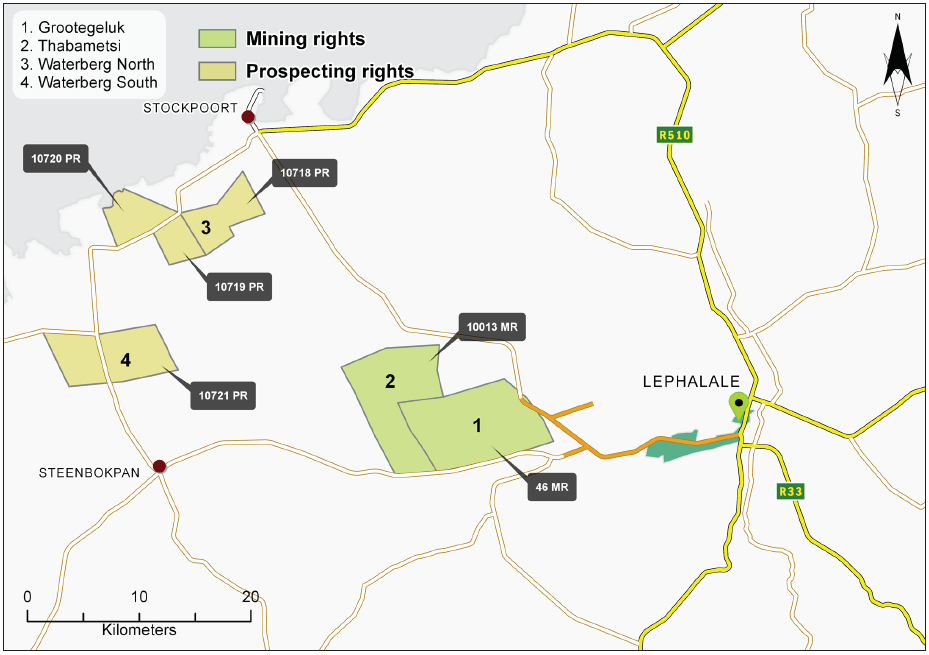
Arnot, an Eskom tied mine, is in closure after the coal-supply agreement (CSA) with Eskom ended on 31 December 2015. The mine produced thermal coal for over 40 years, using various mining methods, predominantly bord-and-pillar (currently mechanical), opencasting and short-walling between 1995 and 2005. A prefeasibility study on the commercial viability of Arnot in 2016 found that there are several areas that can be profitably mined for the thermal coal market. However, due to the absence of a confirmed contractual service agreement (CSA), no Coal Reserves are declared.
During the reporting period, Exxaro disinvested from the North Block Complex (NBC) coal mine and adjacent coal project of Paardeplaats and these are therefore not included in the 2018 statement.
Matla, an Eskom tied underground operation, is some 20km west of Kriel in Mpumalanga. The operation is an underground mine that extracts coal through three underground mines. Mining activities at mine 1 ceased in 2015 due to pillar instability but a relocation study that entails developing a new box-cut and tunnels to access Coal Reserves was completed and received approval in principle from Eskom in the reporting year. Mine 2 and mine 3 use bord-and-pillar, continuous-mining (CM) and shortwall (SW) coal-mining methods, but geological conditions to support SW mining methods are decreasing and will end. A project to replace the soon-to-be redundant SW equipment with its CM equivalent was presented to Eskom.
Mines 2 and 3 produce coal from seams 2 and 4, which is blended to provide the quality of product necessary for Matla power station. Both coal seams' mineable Reserves are rapidly diminishing, and both mines will have to access additional reserves. Two expansion projects, consisting of a decline and incline (respectively) below and above current workings at Mine 2 and 3 were approved by Eskom in 2018, unlocking seams 2 and 4 Coal Reserves. A new vent shaft at mine 3 to support the expansion awaits Eskom approval.
Matla accesses Coal Reserves under challenging geological and mining conditions. Thinning coal seams, variability in coal quality and roof conditions due to the impact of intrusive dykes and sills, as well as geological faulting, present challenges for coal extraction in a number of mining sections. Focused exploration activities, including surface and downhole geophysical surveys and vertical and horizontal drilling, are employed to proactively outline and align the impacts with mine planning. New information from the 2017/18 drilling campaign and results from a revision of historical information were used to update the geological model and scrutinise the classification of Coal Resources. The results improved the outline of the Indicated and Measured Resource strings, and this refinement is reflected in the movement between the various Coal Resource categories. The change in the resource base resulted in a 5.7% decrease in the Coal Reserve after the LoMP was revised. The reduction of pillar-extraction recovery based on the review of the extraction process to enhance ventilation and safety as well as considering actual extraction figures in the reporting period resulted in a further 13% decrease in Coal Reserves.
In line with Exxaro's commitment to unlock value, an expansion project to extend the LoM of Leeuwpan, an open pit operation in Delmas, Mpumalanga, by 10 years was implemented in 2018. The updated plan incorporates changes in the price structure of the export market, with higher prices for lower-energy products leading to higher yields. The R500-million optimisation project will enhance Leeuwpan's performance by better aligning access roads to the site, as well as upgrading the existing plant and producing high-quality thermal and metallurgical coal for domestic and export markets. The road relocation and box-cut of the expansion project were successfully concluded in the reporting period. An investigation surrounding the OI reserve resulted in unlocking additional Coal Resources (~2.7Mt) and are included as Probable Reserves in the LoM until all environmental approvals are secured. Significant dyke activity and a prominent dolerite sill that overlies both the resource blocks of UB and OI (Leeuwpan expansion), negatively affecting both slope stability and coal quality, are investigated through open-hole drilling and down-hole geophysical surveying. The impacts are proactively accommodated in mine planning.
The ECC complex comprises the Dorstfontein, Forzando and Tumelo operations. Dorstfontein complex lies just north-east of the town of Kriel, in Mpumalanga. The complex comprises DCMW (West), an underground mine, and DCME (East), an opencast operation, as well as Rietkuil (Vhakoni), an adjacent project for which approval is pending of a section 102 of the MPRDA to incorporate this right into the DCME mining right. New information (130 holes) triggered an update of the geological model in 2017. A revision of the LoM in the reporting period, specifically considering the 2017 geological model, resulted in a significant amount of seams 2 and 4 material being included in underground Coal Reserves. The DCMW seam 4 project was implemented in 2018, unlocking seam 4's lower Coal Reserves through an incline in existing mine infrastructure. Expansions of the Dorstfontein assets illustrate the continuous and successful drive to unlock value for ECC.
The Forzando complex (FZO), a part of ECC, is 10km north of Bethal, and just south of the Dorstfontein complex. FZO complex comprises two underground mines, Forzando North (FZON) and Forzando South (FZOS), and both mining rights were executed in 2013 for a period of 16 years. Forzando accessed some historical workings at FZON (under care and maintenance since 2014) successfully in the reporting year, increasing production and quality of the overall coal product mix. Mining in general is affected by geological faulting and dolerite (sill and dyke) activity, resulting in poor roof conditions and restricting access to potential resource areas. These challenges are thoroughly investigated and accommodated in mine planning and the team is addressing the impact through focused infill drilling (characterisation) and effective grade-control practices (managing mining losses).
Exxaro's mining and prospecting rights in Mpumalanga
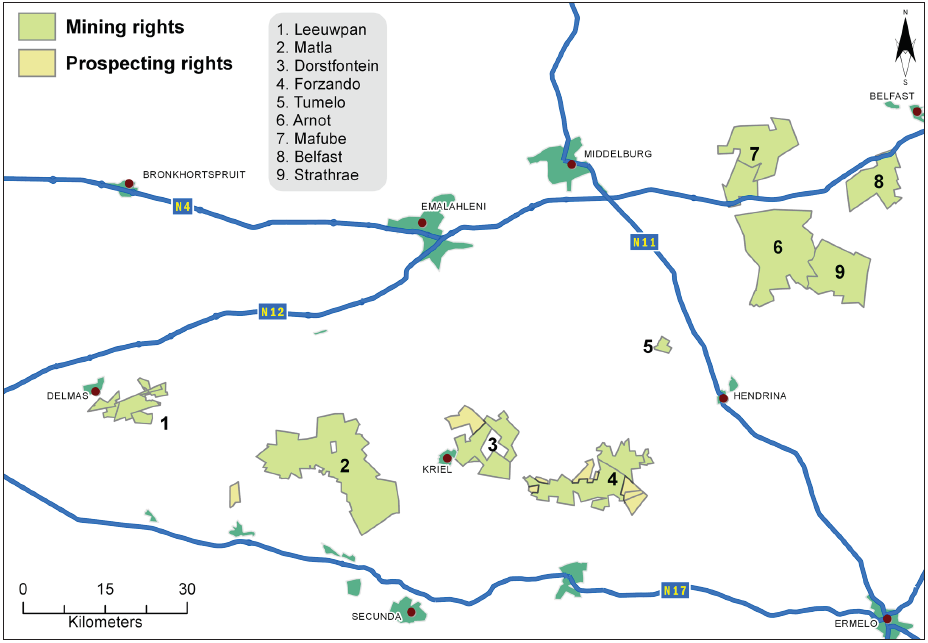
The person in Exxaro designated to take corporate responsibility for Mineral Resources, Henk Lingenfelder, the undersigned, has reviewed and endorsed the reported estimates. Mr Lingenfelder is a member of the Geological Society of South Africa and registered (400038/11) with the South African Council for Natural Scientific Professions. He has a BSc (hons) in geology and 23 years of experience as a geologist in coal, iron ore and industrial minerals.
The person in Exxaro designated to take corporate
responsibility for Mineral Reserves, Chris Ballot, the
undersigned, has reviewed and endorsed the reported
estimates.
Mr Ballot Is a mining engineer registered
(20060040) with the Engineering Council of South Africa. He
has 22 years of experience in iron ore, mineral sands and coal
in various technical and management roles. His qualifications
include BEng (mining), GDE and MBA.
Both parties have consented to the inclusion of Mineral Resources and Mineral Reserves estimates in the integrated report 2018. Exxaro has written confirmation from the competent persons that the reporting is compliant with the SAMREC Code, the relevant portions of table 1 and the JSE section 12 requirements, and they consent to the publication of the report.
JH Lingenfelder The address for South African Council for Natural Scientific
Professions: |
CC Ballot The address for Engineering Council of South Africa: |